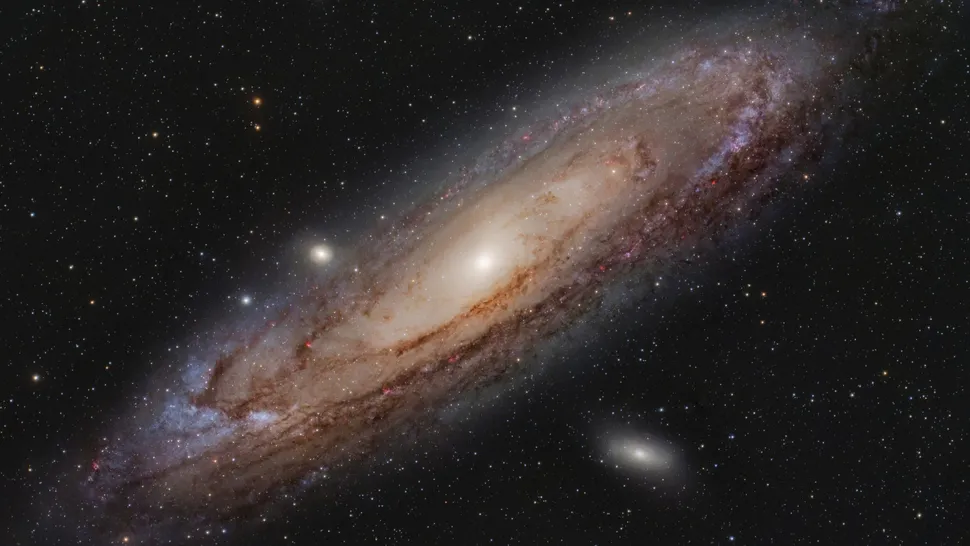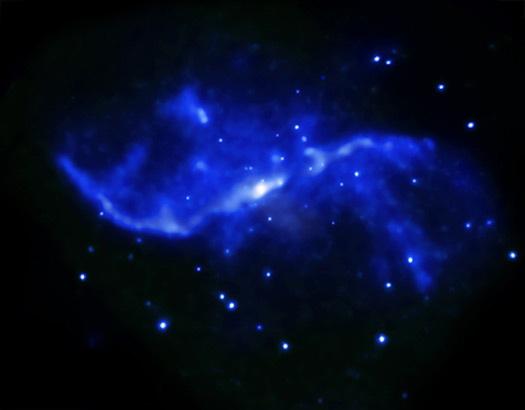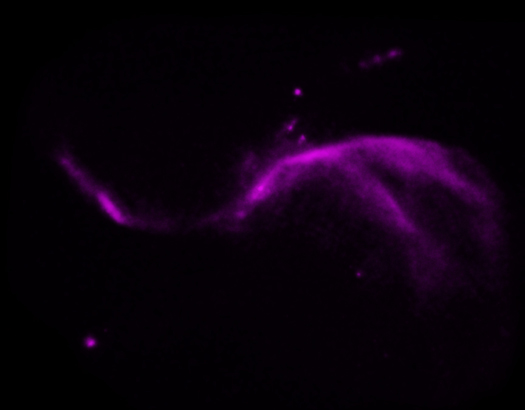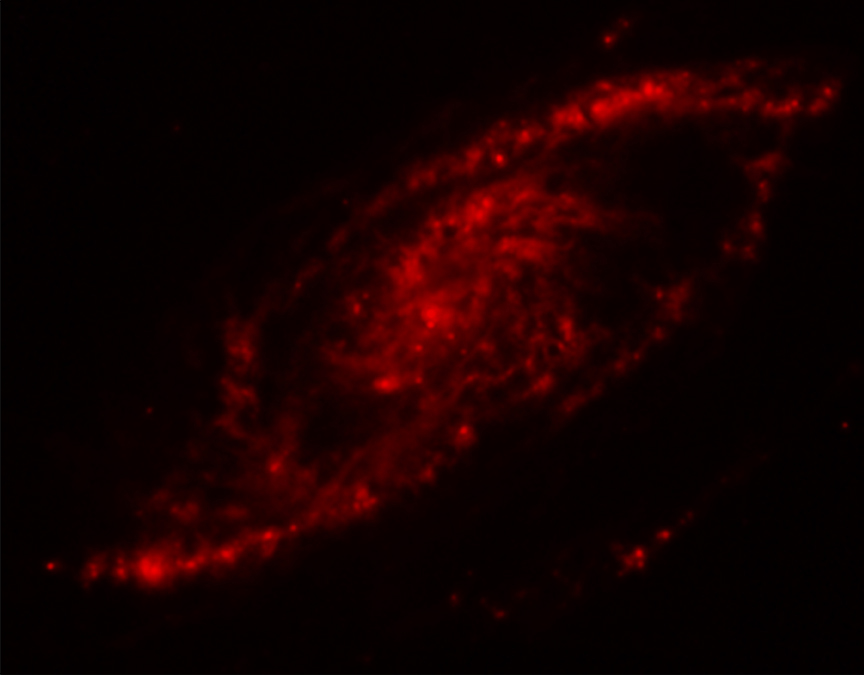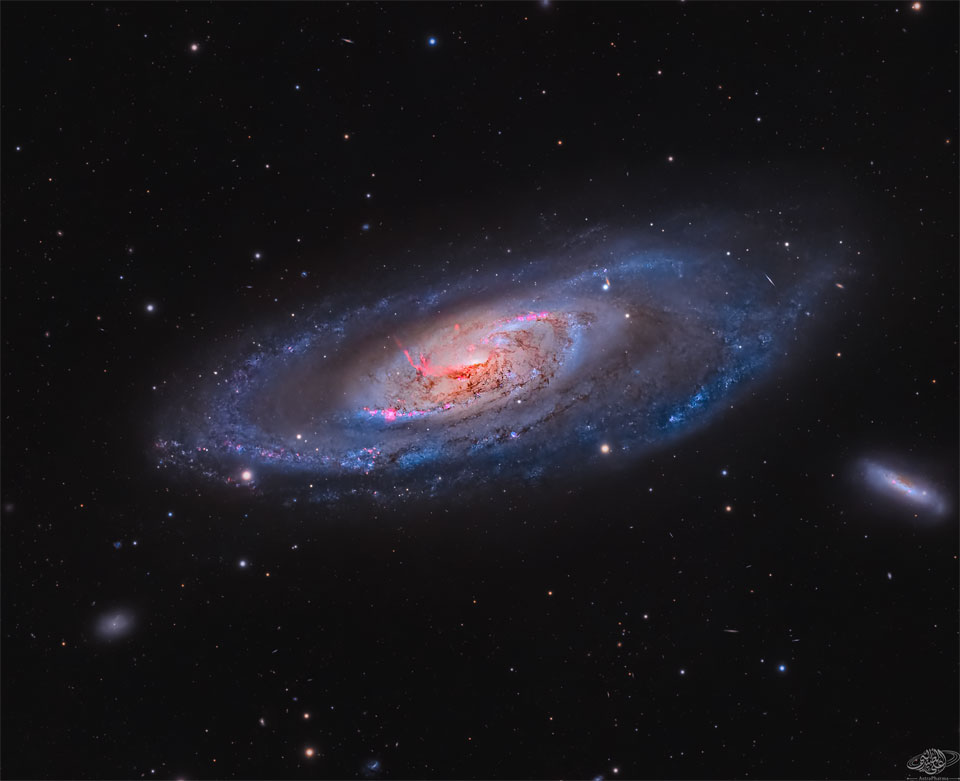Thanks for the comments, Victor and Johnny!

The reason why I posted the picture of the "purple-armed" M106 is that these arms are
so unusual. I don't know of any other galaxy that has similar "X-ray—radio arms"!
M106 in X-rays and radio waves:
But the extra arms are completely invisible in infrared light:
So what causes those extra arms?
Chandra X-ray Observatory wrote:
A new study of these anomalous arms made with Spitzer shows that
shock waves, similar to sonic booms from supersonic planes, are heating large amounts of gas — equivalent to about 10 million Suns.
What is generating these shock waves? Radio data shows that the supermassive black hole at the center of NGC 4258 is producing powerful jets of high-energy particles. Researchers think that these jets strike the disk of the galaxy and generate shock waves. These shock waves, in turn, heat some of the gas — composed mainly of hydrogen molecules — to thousands of degrees.
So that's one of the differences between M106 and M87, I guess. The extremely powerful jet of M87 doesn't hit the disk of M87, since M87, being an elliptical galaxy, doesn't have a disk.
The jets of M106 hit "thick parts" of the disk of M106 - i.e., I guess, parts that are full of gas and dust - and, the way I understand it, the collision between the jets and the gas and dust of the disk creates shock fronts that give rise to the anomalous arms of M106.
And sooo... M106 has "water masers". What are those? Groan... you are asking me, the math idiot!


All right. "Masers" are supposedly like lasers, except with a considerably longer wavelength. So what are lasers really?
lasers.linl.gov wrote:
A laser is created when electrons in the atoms in optical materials like glass, crystal, or gas absorb the energy from an electrical current or a light. That extra energy “excites” the electrons enough to move from a lower-energy orbit to a higher-energy orbit around the atom’s nucleus.
Light moves in waves. Ordinary visible light, say from a household light bulb or a flashlight, comprises multiple wavelengths, or colors, and are incoherent, meaning the crests and troughs of the light waves are moving at different wavelengths and in different directions.
This is not quite what incoherent light looks like, but it will have to do:
███ ███ ███
███ ███ ███ ███ ███
███ ███
In a laser beam, the light waves are “coherent,” meaning the beam of photons is moving in the same direction at the same wavelength. This is accomplished by sending the energized electrons through an optical “gain medium” such as a solid material like glass, or a gas.
So the laser beam is something like this:
███ ███ ███ ███ ███ ███ ███ ███ ███ ███ ███
So I guess that a beam of radio waves (?) from the black hole of M106 is passing through some kind of "gain medium", so that all the radio waves that come out of it are the same wavelength. And through that, you can somehow calculate how far away M106 is.
Don't ask me to tell you how they do that!!!!
Are water masers like this???
And finally, in my first post, I posted a picture of Andromeda alongside M106. What's the deal with that?
Well, M106 and Andromeda are really very similar!
Wikipedia wrote about M106:
It is one of the largest and brightest nearby galaxies,
similar in size and luminosity to the Andromeda Galaxy. The supermassive black hole at the core has a mass of (3.9±0.1)×10
7 M
☉.
Even the black holes are similar!!!
Wikipedia wrote about the black hole of Andromeda:
The mass of M31* was measured at 3–5 × 10
7 M
☉ in 1993, and at 1.1–2.3 × 10
8 M
☉ in 2005.
But for all the similarities between M106 and Andromeda, our big bad sister of a galaxy is at least very much more quiet than M106. Perhaps it is asleep!

Which might perhaps be good for us, or perhaps it doesn't matter (yet) if the black hole of Andromeda is acting up or not, since it is still 2 million light-years away from us.
But you never know what might happen!
Ouch! That must have hurt! Where is the bandaid

in the
First Aid Kit?
Ann
 M106: A Spiral Galaxy with a Strange Center
M106: A Spiral Galaxy with a Strange Center
